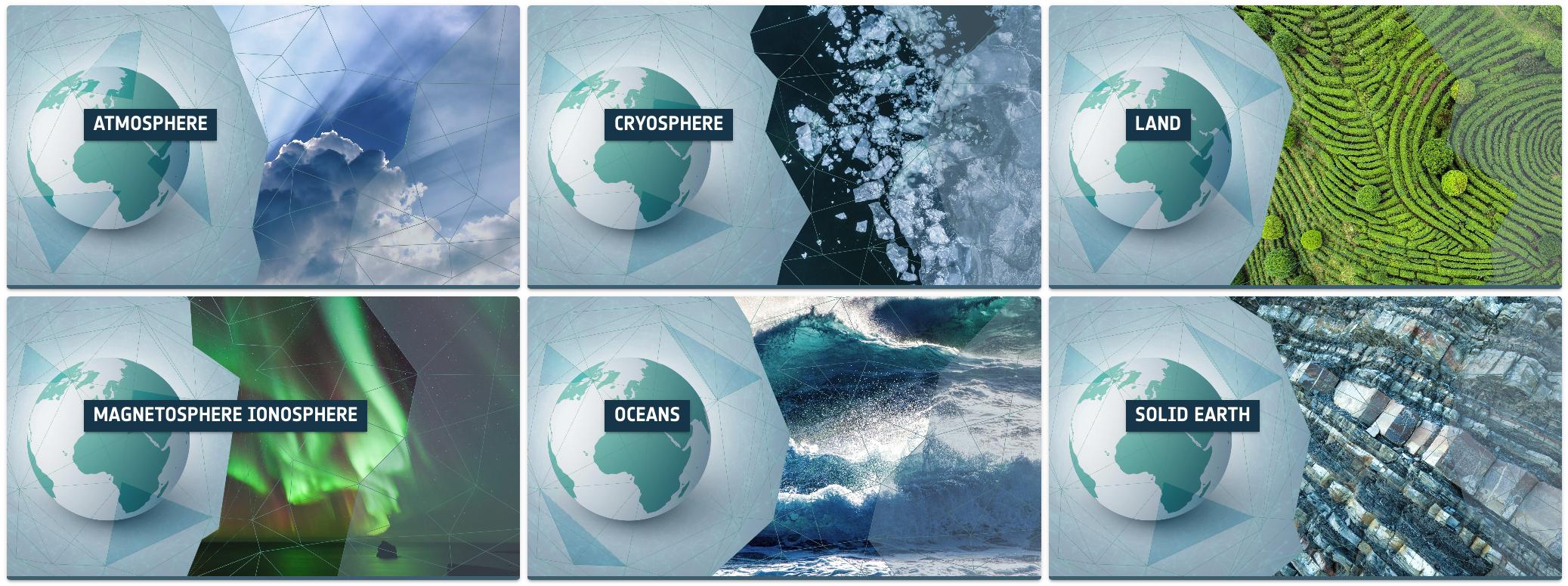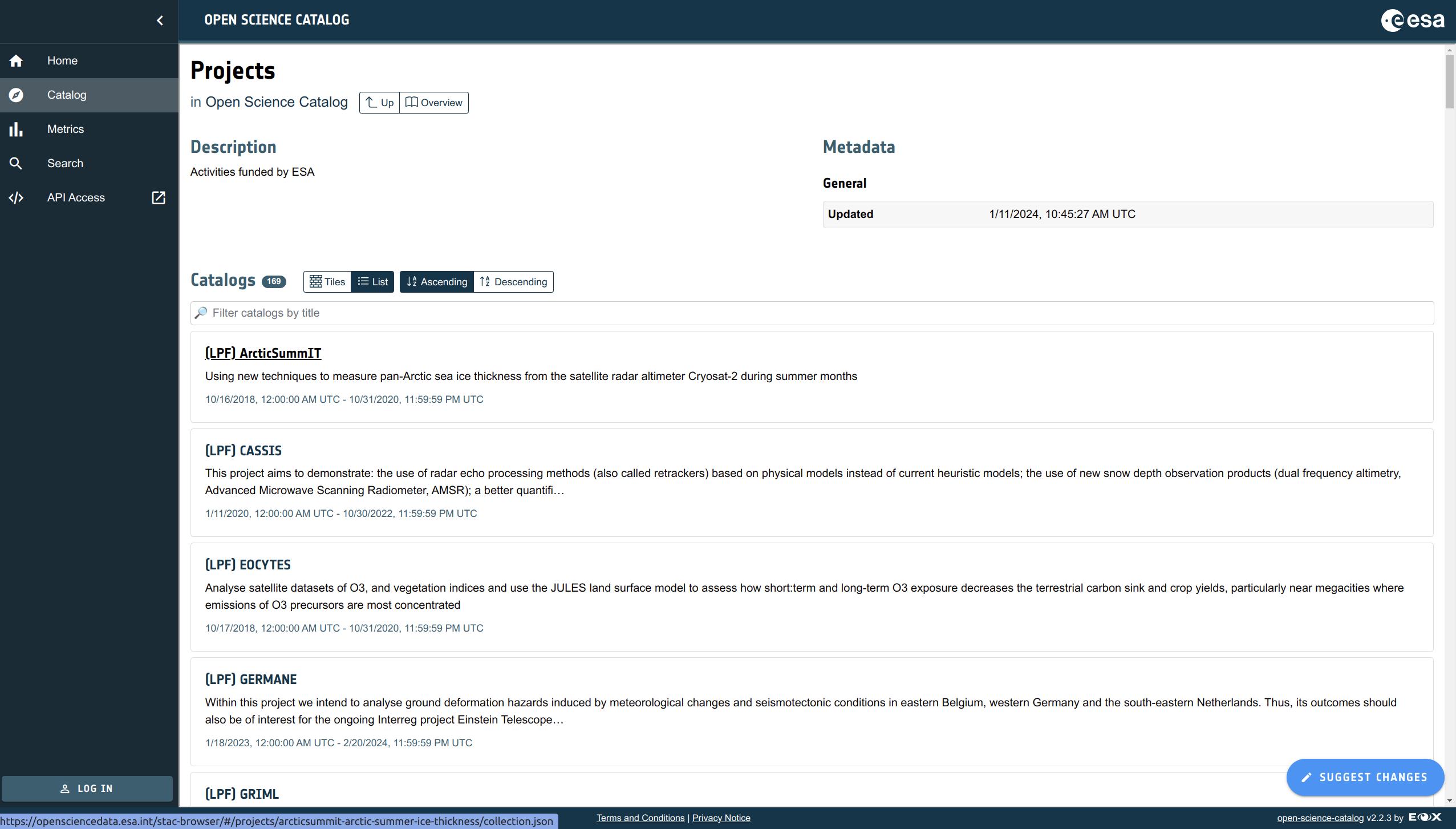
Open Science Catalog
Just like the European Space Agency (ESA), we advocate for and actively support Open Science, as we believe in the significance of collaborative efforts in advancing scientific knowledge and addressing global challenges. We acknowledge the transformative power of Open Science in driving interdisciplinary collaboration, facilitating reproducibility, and ultimately contributing to a more sustainable and resilient future for our world.
We are proudly supporting ESA in their Open Science Catalog (OSC) initiative through frontend development. The OSC is one part of a larger initiative by ESA called EarthCODE, which aims to provide an Earth Science Collaborative Open Development Environment.
The OSC aims to advance science initiatives and projects by providing a platform to store catalog records for science themes, variables, projects, products, and contributing (EO) missions. This system allows users an easy way to browse, search, and access metadata information associated with these records. This blog post provides some technical details about the OSC.
The frontend application of the Open Science Catalog can be accessed from its public URL (opens new window). This application will communicate with both the resource catalog, powered by PyCSW, allowing for dynamic searches, as well as a static catalog hosted on GitHub pages (opens new window). The frontend is built using the popular Vue framework and uses various elements of the EOxElements library (opens new window). Additionally, it incorporates the STAC browser (opens new window), a fully fledged browser application to browse the contents of a STAC catalog or API.

The contents of the catalog is actually managed by a public GitHub repository, allowing for a full history of changes to the contents of records. Additionally changes to the repository are done using the mechanism of a Pull Request. Users can suggest changes, which can be revised by the data administrators of the Open Science Catalog, and run through rigorous checks using GitHub actions, which perform checks on the validity and the integrity of the changes. When a Pull Request is accepted, the changes are incorporated in the main branch of the catalog, triggering a new release of the static catalog, which is subsequently merged into the resource catalog.

The Open Science Catalogs data model is expressed in Spatio-Temporal Asset Catalog objects. This allows third party software to also access and digest the contents of the catalog. This is why the Open Science Catalog is also listed in the popular STAC Index (opens new window).
As STAC is usually used for upstream earth observation data and not for derived science products, an Open Science Catalog specific extension (opens new window) was created to add the specific metadata required to describe the science data records. Additional community extensions are used for various other metadata, such as contacts, or the scientific extension.
The Open Science Catalog is a versatile and robust tool, built on open standards and open source software in order to facilitate Open Science.
Stay tuned for further updates about our Open Science activities, like EarthCODE.